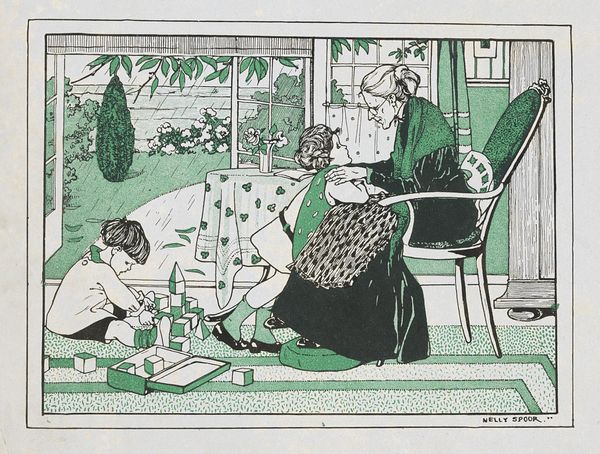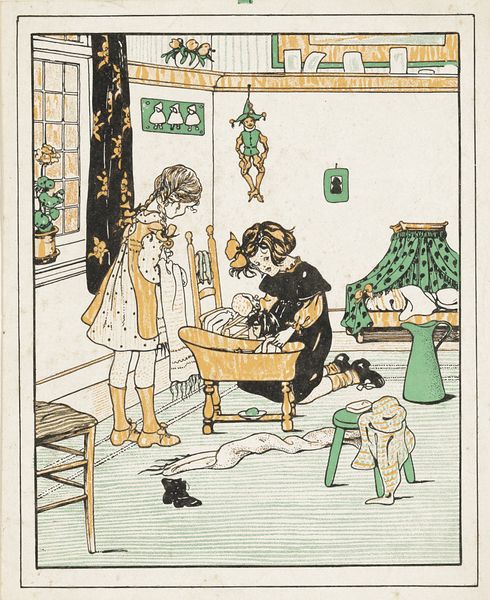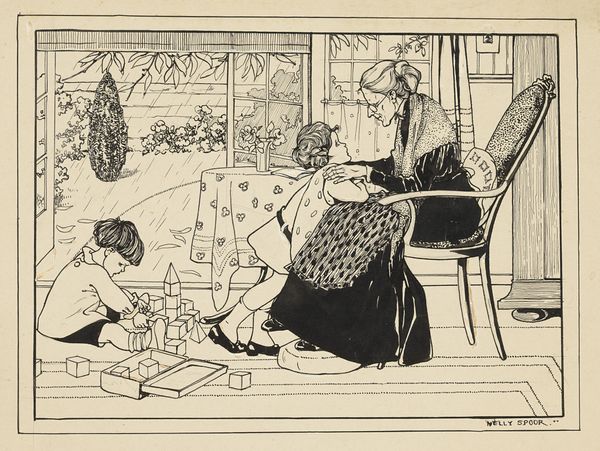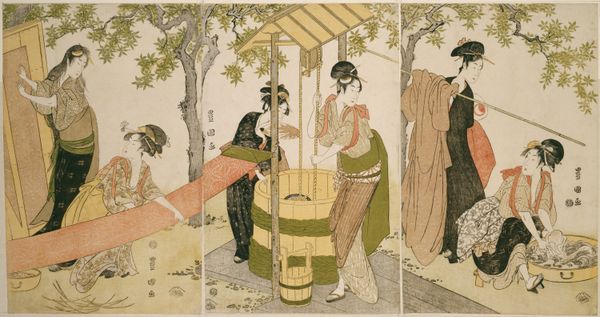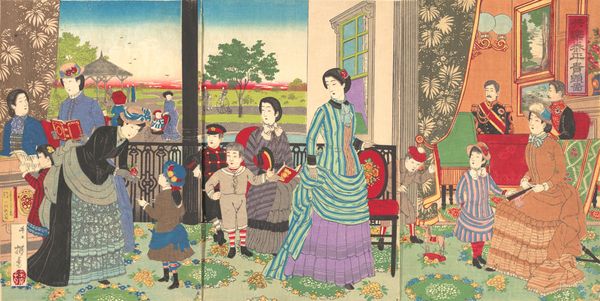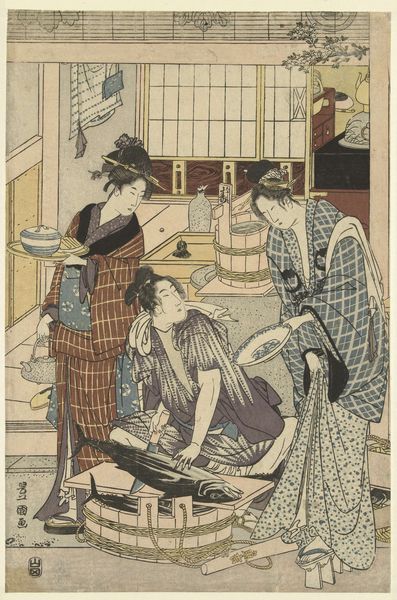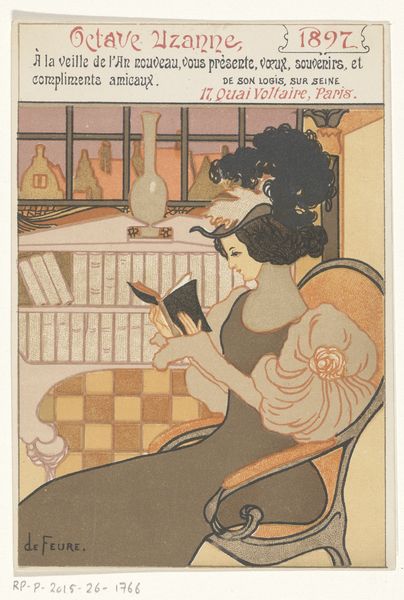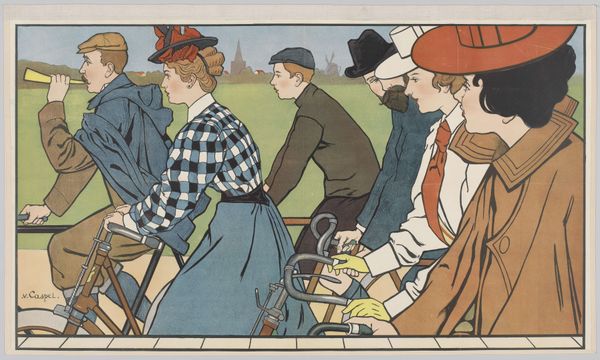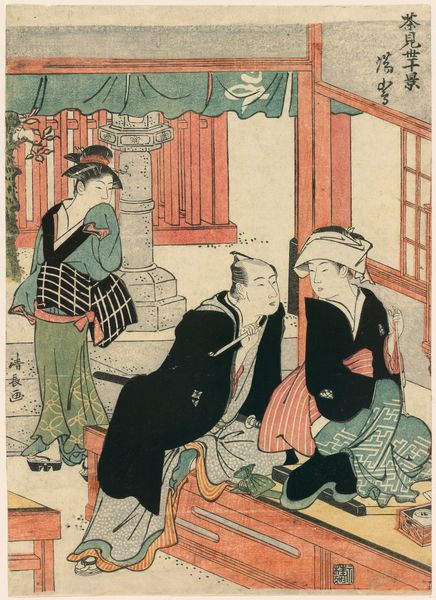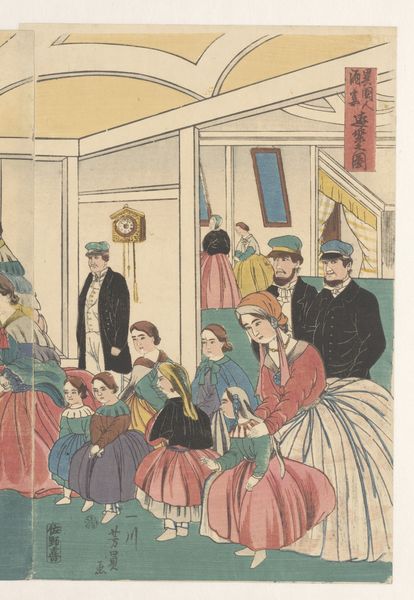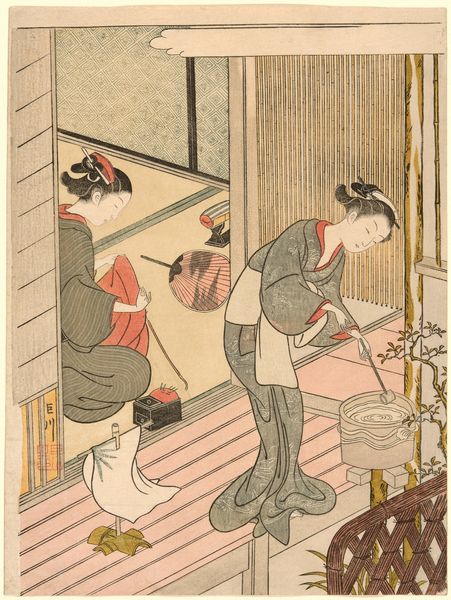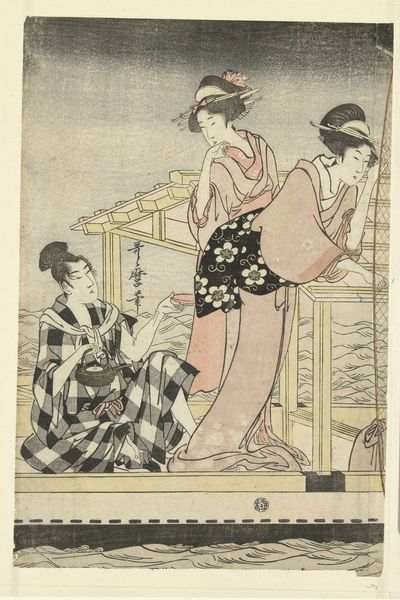
Dimensions: height 190 mm, width 249 mm
Copyright: Rijks Museum: Open Domain
Curator: Welcome, everyone. We are standing before Nelly Spoor's work, "Two Children and an Old Woman in an Interior," likely created sometime between 1895 and 1950. It's a mixed-media piece using painting, drawing, watercolor, and even what appears to be impasto. Editor: Immediately striking is its warmth. There is a comfortable, lived-in quality created with the juxtaposition of bold outlining and watercolor washes. It's intimate; familial. Curator: Spoor worked across a range of media, never quite adhering to traditional genre boundaries. Note how this scene borrows from both genre painting and intimism, elevating domestic space and experience. But beyond that, she skillfully uses readily available materials like paper and basic paints, democratizing art making itself. Editor: Absolutely. And looking closely at this piece within its sociohistorical context, one can see how gender roles of domestic care are emphasized. The older woman embodies traditional expectations of caregiving, positioned protectively beside the children within the domestic sphere. Is Spoor celebrating or critiquing those expectations? Curator: It is a bit ambiguous, isn’t it? The choice of impasto application for elements like the shawl adds to the sense of weight and materiality; Spoor is forcing us to contend with the labor of creating and the labor represented in the scene. Consider how accessible watercolor and drawing materials are; Spoor perhaps comments on both class and gender by creating space where women artists can make art. Editor: And look at the composition – how the interior opens to an external garden, but the figures remain inside. This placement emphasizes a nuanced sense of containment and protection, perhaps unintentionally highlighting societal limitations placed upon women and children during that time. There's an emotional ambivalence here – warmth but also a kind of constraint. Curator: Yes, that balance is a defining quality. It also shows an understanding of materiality that reflects broader changes during the modernist moment where ideas and labor are being interrogated. Editor: Considering these narratives together, we are encouraged to consider who holds access, then and now. This scene prompts discussions about historical family structure, material accessibility, and ongoing intersectional politics, positioning the domestic and women’s labor within our conversations today. Curator: It really causes one to pause and consider how the ordinary becomes extraordinary through art and careful craftsmanship. Editor: Precisely. An important conversation about the intimacy of family roles and their continued impacts.
Comments
No comments
Be the first to comment and join the conversation on the ultimate creative platform.
